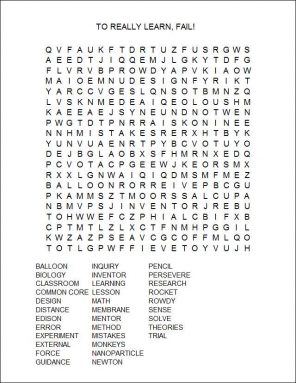To really learn, fail — then fail again!
That ‘error’ in trial-and-error learning can be the ticket to learning well —and having more fun
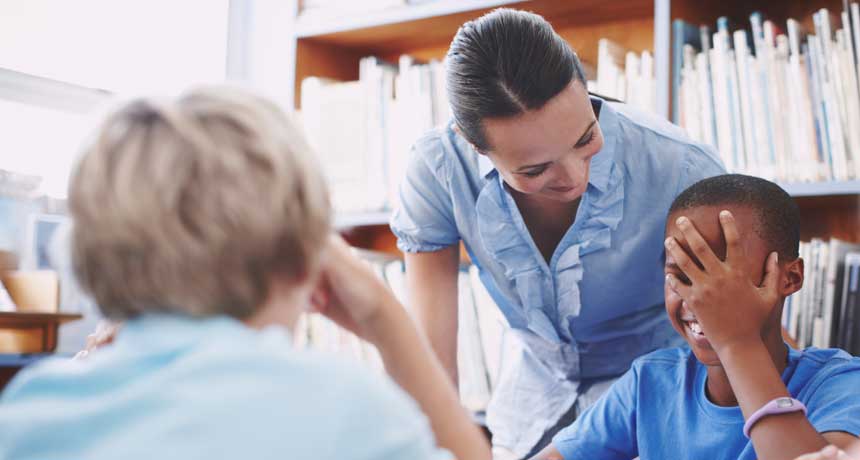
We all make mistakes. When students struggle through trial and error, they also develop an appreciation for how failure often leads inadvertently to new discoveries and inventions. Research suggests students also can learn more effectively this way.
STEEX / iStockphoto
By Susan Moran
Thomas Edison just couldn’t get it right.
After more than five months and 9,000 experiments, the famous inventor couldn’t get a new type of battery to work. Too bad, a co-worker said. What a shame that effort had produced no results.
But Edison saw it differently. “Results? Why, man, I have gotten a lot of results! I know several thousand things that won’t work!”
Edison eventually did get his new kind of battery to work. In the end, it took even more time — and thousands more experiments.
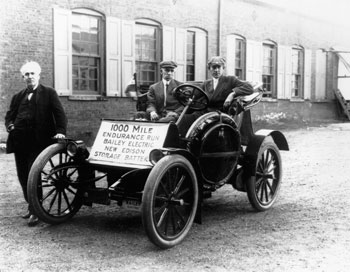
On a spring morning, Hogan had given each of her students a tool kit containing a plastic foam dinner plate, a balloon, a small plastic stirrer straw, a sharp pencil and masking tape.
She instructed her young inventors to use the parts in any way they wanted to make racing cars from the foam plates. They also were charged with figuring out how to propel those cars great distances across the floor. The kit’s balloon would be a key component of these “rocket” racers.
Kids in many classrooms across the United States are learning science in much the same way. Instead of explaining things to kids from the front of a classroom, teachers are beginning to instead “guide from the side.” They are nudging kids to become Edisons — tinkerers who learn by doing.
A big take-home lesson from such projects is that there may be no one single right answer to a problem. There may instead be many. Along the path to discovering this, kids were being encouraged to propose theories — and then test them.
Along the way, many students will fail. Often, they’ll fail many times. Perhaps not several thousand times (like Edison). But along the way they may just find out that by analyzing why something went horribly wrong, they’ve learned a lot. And they can take ownership of that learning, knowing that they earned it from hard-won experience.
What’s more, the lessons we learn this way are those we are most likely to remember.
Making cars race
The rocket-racer project in Hogan’s class offered lessons on the three laws of motion set out by Sir Isaac Newton in the 1600s. The first morning’s tests focused on Newton’s third law. It states that for every action there will be an equal and opposite reaction.
Air escaping from an inflated balloon attached to each car produced the “action” force. The “reaction” force would be what pushed the racing cars in the opposite direction.
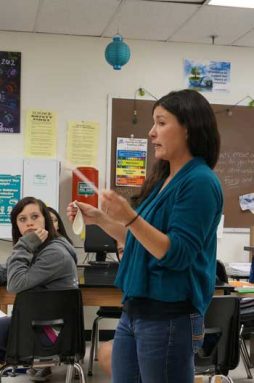
Sergio Montoya watched as his racer lunged forward about 1 meter (3.3 feet), then wobbled and came to a stop. The boy picked it up and, like a doctor examining a patient’s broken leg, diagnosed its weakness. “Mine leaned to the side too much. And it was leaking air,” he explained afterward.
If Sergio was to produce a winner, he’d have to get busy tweaking his design.
He observed how his racer had bumped up against other cars. And that reminded him of something he’d heard about in class: Newton’s first law of motion. It states that an object in motion will stay in motion until some external force acts upon it.
Hogan listened to the boy’s explanation with a smile. Hearing young teens mention “Newton” as they scrambled to test and retest their racers was music to her ears.
These young engineers saw the project as fun. Their teacher saw this hands-on testing as an especially effective way for them to learn science. As they tried things out, most would make mistakes. Perhaps lots of mistakes. But as the small groups of students observed what worked — and what didn’t — they learned things. They also were excited about sharing with their classmates what they were gleaning.
“They figure out what’s the best way to structure the rocket racer so it’ll move the longest distance,” Hogan observes. “A lot of it is trial and error.” And by designing these tests themselves, she says, “they seem to enjoy it more.” Indeed, she finds, they seem to “learn better when they test out principles by themselves, rather than having me just tell them answers.”
Fail, fail again . . . fail better
Everyone learns from mistakes. Yet, as obvious as the idea seems, scientists have done little research to measure how making mistakes affects what we learn and how long those lessons stay with us. Some recent research has, however, focused on a related topic. It’s about something known as learning through inquiry. From kindergarten through college, this technique is becoming popular. It basically means to learn by doing.
Joe Levine is a big supporter of this learning style. A biologist and science teacher, he is an author of one of the most widely used high school biology textbooks.
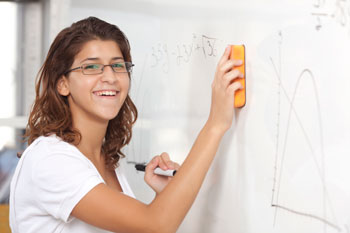
To teach this process, teachers have to learn it first. To help them do that, Levine and his colleague Barbara Bentley each year offer teachers a series of lessons in their own two-week classes. And their classrooms? They are the tropical forests of Costa Rica.
Under the trees and in earshot of monkeys and more, these teachers become students. Here, they learn how to create student-designed projects for their kids back home. The idea, Levine says, is to let pre-teens and teens “come up with their own questions. And test their hypotheses using data. It creates lots of opportunities for making mistakes.” That means there also will be lots of opportunities for discovery — and learning.
A related approach to learning is also sweeping into U.S. math classrooms. A set of new educational standards have been adopted by 43 states and the District of Columbia. Known as the Common Core, these standards have been in the news for much of the past year. They call for students in kindergarten through high school to eventually adopt eight math practices.
The first one asks teachers to help kids “make sense of problems” and then to “persevere in solving them.” Here, the idea is that you should learn ways to make educated guesses about how to solve a math problem. Then you can test out different ways to solve problems, based on what you’ve learned in the classroom.
Daniel Fitzpatrick offers one example from when he taught middle-school math. (He now trains future teachers through a program at the University of Texas at Austin.) In a lesson about measuring units, seventh graders were learning to calculate the volume and surface area of a prism and a cylinder. Rather than just giving them the formula (as a traditional lesson would do), Fitzpatrick gave them tools — such as cardboard boxes and cylinders, strings, paper clips and rulers. Then he asked them which one — the prism or the cylinder — can hold the most material inside but also be the least costly to make?
His students never actually answered that specific question, Fitzpatrick says. But it didn’t matter, he added. Through this project, the students learned, by doing, what surface area really is and how it is different from volume.
Students take the lead
Another learning technique often goes hand in hand with inquiry-based learning. This second approach is called student-centered instruction. As its name suggests, you take the lead in teaching and mentoring your classmates.
Ellen Granger heads the Office of Science Technology at Florida State University in Tallahassee. She has found that putting students at the center of learning helps science students achieve more. Her 2012 study worked with fourth- and fifth-graders. However, he says, her results should apply to students at any age.
Whether they’re kindergartners or college students, “It doesn’t matter,” Granger says. “We’re finding the same things… When you must do the sense-making, you learn better.” Sense-making? This is a term Granger uses to refer to students who try to personally make sense of a concept or process.
Success requires that you think creatively, not just take things at face value, she says. But you don’t have to go it alone. The approach calls for teachers to offer some guidance. Here, teachers aren’t supposed to tell you how something works. Instead, they should indirectly point the way by offering some careful, thought-provoking questions.
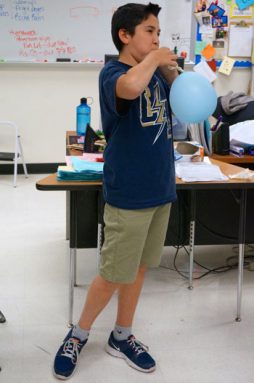
Hope developed a new filter for drinking water. Working with a mentor at the National Institute of Standards and Technology in Boulder, Colo., Hope conducted one experiment after another. She used special membranes embedded with nanoparticles. Nanoparticles are tiny particles that are just billionths of a meter across. Not much is known about how these new membranes behave.
“My mentor wanted me to learn from failure, learn through trial and error,” Hope explains. “Because of failure I came up with new approaches in research that were different from what other researchers were doing.” Thinking back on this, Hope now says, “I wouldn’t have made any discoveries if [my mentor] had given me a strict methodology to follow.”
Hope is continuing her research at Yale University, where she is finishing her freshman year. She works in a leading nanotechnology lab.
Creativity is full of mistakes
Making mistakes can spark learning and creativity at any age and in any field. First, it takes conquering a significant fear. “Our fear of mistakes has hugely impeded our creativity,” says Margaret Heffernan. She is the author of the 2011 book, Willful Blindness: Why We Ignore the Obvious at our Peril.
“Our very competitive upbringing constrains our ability to do wildly creative work,” she says. That’s why I’m very interested in people making mistakes and celebrating them.”
Heffernan urges students to value the process of thinking, and not just getting the “right” answer. “Messiness, making mistakes: There’s fantastically rich ground here for creativity and exploration,” she says.
At Westlake Middle School, Hogan’s eighth-graders returned the following day for their cars’ big race. This would be their chance to put into practice what they had learned the day before.
Sergio explained how experimenting with his balloon allowed his racer to zoom much farther — so far, in fact, that this eager student won the race.
“I learned that the more you tweak something, the more you can be successful at it,” he says. And it’s a lesson he’s not likely to forget.
Power Words
(for more about Power Words, click here)
biology The study of living things. The scientists who study them are known as biologists.
chemistry The field of science that deals with the composition, structure and properties of substances and how they interact with one another. Chemists use this knowledge to study unfamiliar substances, to reproduce large quantities of useful substances or to design and create new and useful substances.
Common Core A set of educational standards that most U.S. states have adopted. The standards set the goals for what students should know and be able to do at each grade level.
data Facts and statistics collected together for analysis but not necessarily organized in a way that give them meaning. For digital information (the type stored by computers), those data typically are numbers stored in a binary code, portrayed as strings of zeros and ones.
filtration The process of blocking the passage or flow of some materials through a fabric, screen or some other type of matrix.
hypothesis A proposed explanation for a phenomenon. In science, a hypothesis is an idea that must be rigorously tested before it is accepted or rejected.
inquiry The act of inquiring, or seeking, information by questioning.
membrane A barrier that blocks the passage (or flow) of some materials depending on their size or other features. Membranes are an important part of filtration systems.
mentor An individual who lends his or her experience to advise someone starting out in a field. In science, teachers or researchers often mentor students, helping them refine their research questions. Mentors can also offer feedback on how young investigators prepare to conduct research.
nano A prefix indicating a billionth. It’s often used as an abbreviation to refer to objects that are a billionth of a meter long or in diameter.
nanoparticle A small particle with dimensions measured in billionths of a meter.
Isaac Newton A 17th century English physicist and mathematician.
Newton’s laws (of motion) Three physical laws that together laid the foundation for classical mechanics. They describe the relationship between a body and the forces acting upon it, and a body’s motion in response to those forces.
perseverance The quality that allows someone to continue trying to do something even though it is difficult.
physics The scientific study of the nature and properties of matter and energy.
theoretical An adjective for an analysis or assessment of something that based on pre-existing knowledge of how things behave. It is not based on experimental trials. Theoretical research tends to use math — usually performed by computers — to predict how or what will occur for some specified series of conditions. Experimental testing or observations of natural systems will then be needed to confirm what had been predicted.
theory (in science) A description of some aspect of the natural world based on extensive observations, tests and reason. A theory can also be a way of organizing a broad body of knowledge that applies in a broad range of circumstances to explain what will happen. Unlike the common definition of theory, a theory in science is not just a hunch. Ideas or conclusions that are based on a theory — and not yet on firm data or observations — are referred to as theoretical.
Word Find (click here to enlarge for printing)
